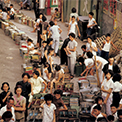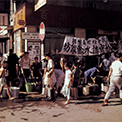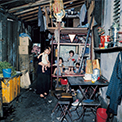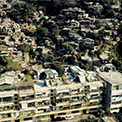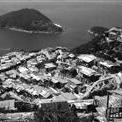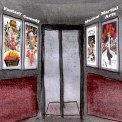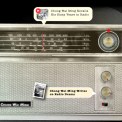After the Second World War, a large number of immigrants flooded into Hong Kong from mainland China, building makeshift homes in the hills or on the outskirts of the city. Hygiene was appalling in these squatter areas, and in 1953 a huge blaze that broke out in Shek Kip Mei left thousands of squatters homeless and prompted the government to build resettlement areas. In the first generation of resettlement areas, the buildings were seven storeys high, and tenants had to share toilet and shower facilities. They cooked in the corridors, and all they had in their homes were zinc boxes, five-drawer chests, iron bunk beds, kerosene stoves, mosquito nets and spittoons. The rooftops, meanwhile, housed schools operated by charitable organisations. In 1965, the fourth generation of resettlement areas with 16-storey buildings were built, and these provided tenants with private kitchens and bathrooms to improve living conditions substantially. One million people lived in the resettlement areas at this time. In the 1960s, water supplies were frequently restricted in Hong Kong, and scenes of long queues on the streets of Hong Kong as people lined up, buckets in hand, to get water form part of the city’s collective memory.
In the 1970s, the Hong Kong government initiated its Ten Year Housing Plan, which drove the development of new towns such as Shatin and Tuen Mun. Resettlement areas were renamed public housing estates in 1973, and the Home Ownership Scheme was launched in 1976 so that public housing tenants could afford to buy their own homes. At the same time, Hong Kong’s middle class was growing, and private housing estates with excellent facilities, such as Mei Foo Sun Chuen and Taikoo Shing, were developed to meet their housing needs. In the midst of the modern residential high-rises, however, many people continued to live in squats or wooden shacks on the rooftops of old buildings. Nevertheless, Hong Kong’s general housing situation had improved significantly since the 1950s.


